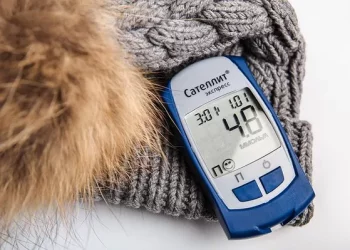Maintaining optimal blood sugar levels is a cornerstone of diabetes management and overall health. Whether you have diabetes or not, keeping your blood glucose levels within a healthy range can significantly reduce the risk of complications and improve overall well-being. Among the many aspects of blood sugar control, resting blood sugar levels—those measured after fasting overnight or in a state of rest—are among the most important to track. Understanding what constitutes a “good” resting blood sugar level is crucial for anyone managing diabetes or working to prevent it.
In this comprehensive article, we will delve into the concept of resting blood sugar, explore the range of normal and abnormal levels, and discuss how various factors impact blood glucose measurements. Whether you are a person with diabetes, a caregiver, or a healthcare professional, this guide will provide clarity on what a good resting blood sugar level looks like and how to achieve and maintain it.
Understanding Resting Blood Sugar
Resting blood sugar, also known as fasting blood glucose, refers to the measurement of blood glucose after an individual has not eaten for at least 8 hours—typically after an overnight fast. This measurement is often taken in the morning before any food or drink is consumed, as it reflects the body’s baseline glucose levels.
The body relies on glucose, derived from food, as a primary source of energy. However, when blood glucose levels are consistently too high or too low, it can lead to significant health issues. For people with diabetes, monitoring fasting blood glucose is crucial in understanding their body’s ability to manage glucose levels without insulin or other interventions.
Why Is Resting Blood Sugar Important?
The resting or fasting blood sugar level provides a snapshot of how well the body is able to regulate glucose levels without food intake. The liver plays a key role in this process by releasing glucose into the bloodstream in response to the body’s need for energy. In people without diabetes, insulin helps keep blood glucose levels within a narrow, healthy range. For individuals with diabetes, however, this regulation may be impaired, leading to higher or lower than normal fasting blood glucose levels.
Monitoring fasting blood glucose is important for several reasons:
Early Detection of Diabetes: Elevated resting blood glucose levels can be a sign of prediabetes or type 2 diabetes, which often presents with no symptoms in the early stages.
Assessment of Diabetes Management: For people with diabetes, fasting blood glucose levels are key indicators of how well their condition is being managed. They help assess the effectiveness of medications, diet, exercise, and lifestyle changes.
Risk Factor for Complications: Chronic high blood glucose levels can lead to long-term complications, including cardiovascular disease, kidney damage, nerve damage, and vision problems. Keeping resting blood sugar levels within a healthy range reduces these risks.
What Is a Good Resting Blood Sugar?
A “good” resting blood sugar level is one that is neither too high nor too low and indicates that the body is effectively managing glucose without excessive insulin resistance or insulin production. Below are the standard ranges for resting blood glucose levels:
Normal Range
For individuals without diabetes, the normal fasting blood glucose level is generally between:
-
70 to 100 mg/dL (3.9 to 5.6 mmol/L)
This range reflects the body’s ability to manage glucose without overproduction or insufficient insulin release. For most people, blood glucose levels will fall within this range when measured in the morning after fasting overnight.
Prediabetes Range
For individuals who are at risk of developing type 2 diabetes (i.e., those with prediabetes), fasting blood glucose levels will typically fall between:
-
100 to 125 mg/dL (5.6 to 6.9 mmol/L)
This range indicates impaired fasting glucose (IFG), which is a condition where the body begins to lose its ability to manage blood glucose effectively. People with prediabetes are at higher risk for progressing to full-blown type 2 diabetes if they do not make lifestyle changes.
Diabetes Range
For individuals with diagnosed diabetes, fasting blood glucose levels should ideally be:
-
Less than 130 mg/dL (7.2 mmol/L)
Consistently higher levels may suggest that the diabetes management plan needs adjustment. If the blood glucose is consistently higher than 130 mg/dL, it may indicate that the person’s treatment plan—whether involving medication, diet, or exercise—needs to be reevaluated.
Hyperglycemia
Fasting blood glucose levels that are higher than 126 mg/dL (7.0 mmol/L) on more than one occasion are indicative of hyperglycemia, a condition where the blood glucose is excessively high. Chronic hyperglycemia can lead to complications like kidney damage, vision problems, and neuropathy.
Factors That Influence Resting Blood Sugar
Resting blood sugar can be influenced by a variety of factors, including:
1. Diet
What you eat plays a major role in how your blood sugar responds. Diets rich in refined sugars, processed foods, and carbohydrates can cause blood glucose levels to spike, whereas high-fiber, low-glycemic foods can help keep blood sugar levels steady. The timing and frequency of meals can also impact fasting blood glucose levels.
2. Physical Activity
Exercise has a profound effect on blood sugar levels. When you engage in physical activity, your muscles use glucose for energy, which can lower your resting blood glucose levels. Regular exercise improves insulin sensitivity and helps regulate blood sugar levels.
3. Stress
Stress triggers the release of stress hormones like cortisol, which can cause an increase in blood glucose levels. Chronic stress can make it more difficult for the body to manage blood sugar effectively, especially for those with diabetes.
4. Medications
Certain medications, including corticosteroids and some antihypertensive drugs, can raise blood glucose levels. On the other hand, medications like insulin and oral hypoglycemic agents help lower blood sugar. It’s important to consult with a healthcare provider when adjusting medications for diabetes management.
5. Sleep
Poor sleep or sleep deprivation can impair the body’s ability to regulate blood glucose. Individuals who consistently experience disrupted sleep may be at higher risk for developing insulin resistance, which can result in higher fasting blood sugar levels.
6. Hormonal Changes
Hormonal fluctuations, especially in women during pregnancy (gestational diabetes), menopause, or the menstrual cycle, can affect blood glucose regulation. Hormonal imbalances can lead to both high and low blood sugar levels.
7. Medical Conditions
Certain medical conditions, such as thyroid disorders, liver disease, and kidney dysfunction, can impact blood glucose metabolism and lead to higher or lower resting blood sugar levels. It is essential to address these underlying conditions to improve glucose control.
How to Achieve and Maintain a Healthy Resting Blood Sugar
Maintaining a healthy fasting blood glucose level requires a multifaceted approach. The following strategies can help you keep your resting blood sugar within the ideal range:
1. Follow a Balanced, Healthy Diet
Eating a balanced diet that includes plenty of vegetables, whole grains, lean proteins, and healthy fats can help maintain optimal blood glucose levels. Avoid excessive consumption of sugary and processed foods, as they can cause blood sugar spikes. Focusing on low-glycemic foods will provide more stable energy and prevent sudden increases in glucose.
2. Exercise Regularly
Engage in both aerobic and strength-training exercises to improve insulin sensitivity and help your body use glucose more efficiently. Aim for at least 30 minutes of moderate exercise most days of the week. Physical activity is one of the most effective ways to lower fasting blood glucose levels.
3. Manage Stress
Incorporate stress-reducing practices into your daily routine, such as mindfulness meditation, yoga, deep breathing exercises, or engaging in hobbies. Managing stress can lower cortisol levels and help regulate blood glucose.
4. Get Adequate Sleep
Aim for 7-9 hours of quality sleep each night. Good sleep hygiene practices, such as avoiding screens before bed and maintaining a consistent sleep schedule, can help improve blood sugar control.
5. Take Medications as Prescribed
For individuals with diabetes, it is essential to take medications as prescribed by a healthcare provider. Insulin and oral hypoglycemic agents can help keep blood glucose levels within the desired range. Regular follow-up appointments with your doctor will ensure your treatment plan is working effectively.
6. Monitor Blood Sugar Levels Regularly
Regular blood glucose monitoring, including fasting blood sugar checks, helps you stay informed about your glucose levels. Use a reliable blood glucose meter and, if necessary, a continuous glucose monitor (CGM) to track trends and make informed decisions about diet, exercise, and medication adjustments.
Conclusion
Resting blood sugar levels are a critical measure of how well the body is managing glucose. A good resting blood sugar level indicates healthy glucose metabolism and is typically within the range of 70 to 100 mg/dL for those without diabetes. For people with diabetes, maintaining fasting blood sugar levels below 130 mg/dL is crucial for minimizing the risk of complications.
Achieving a healthy fasting blood sugar level involves a combination of a balanced diet, regular physical activity, stress management, sufficient sleep, and adherence to medication regimens. For those with diabetes, consistent monitoring and proactive adjustments to lifestyle and treatment plans are essential for maintaining optimal glucose control.
By taking a holistic approach to blood sugar management, individuals with and without diabetes can improve their quality of life and reduce the risk of long-term health complications. Always consult with a healthcare provider to tailor your approach to your individual health needs.
Related topics:
What Is the Diabetes Reading Range?






















